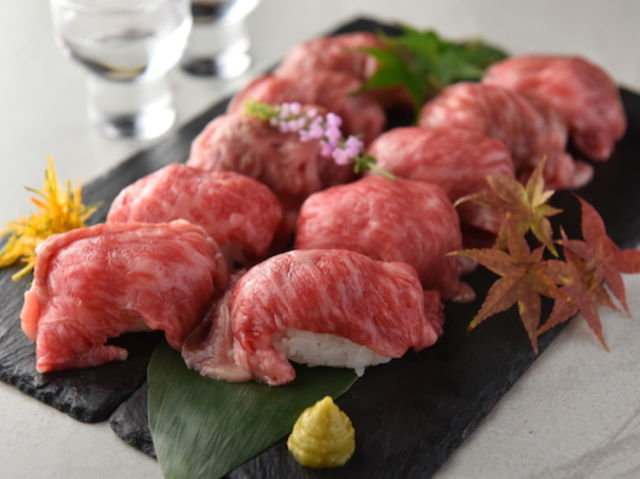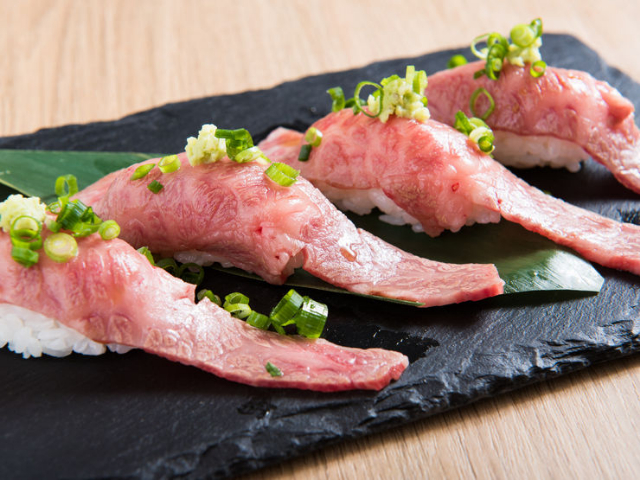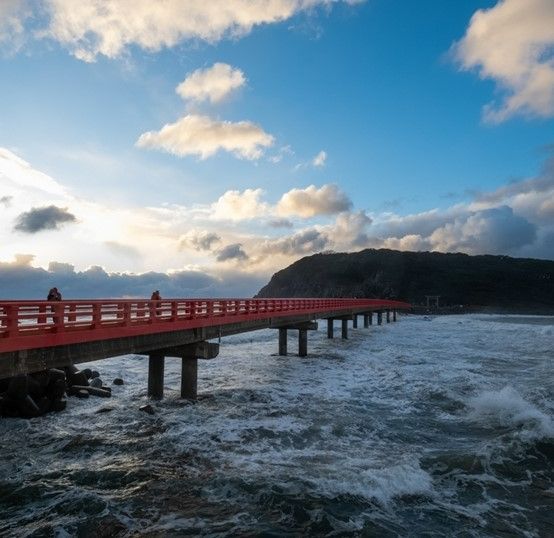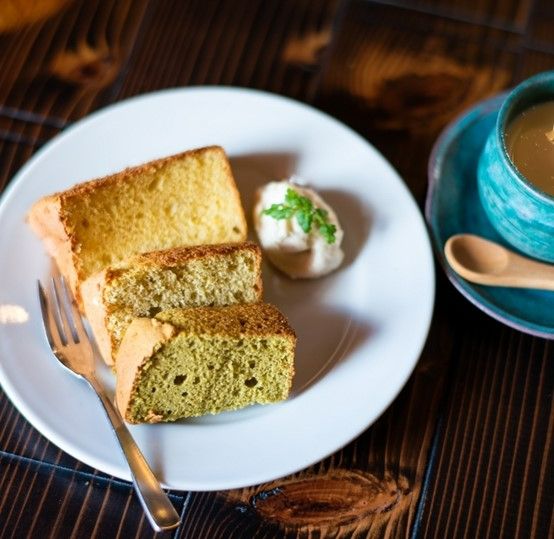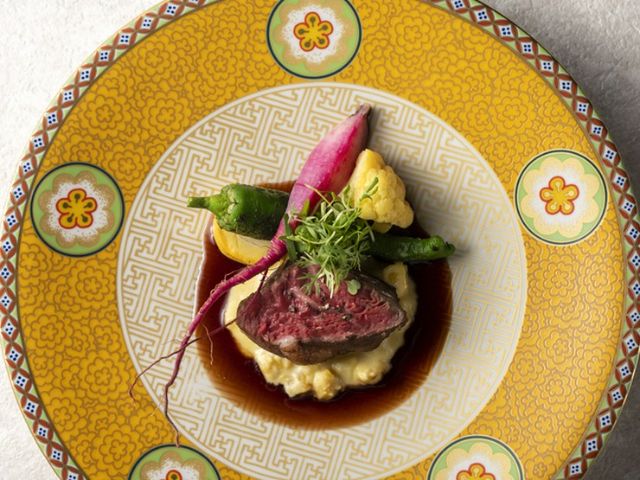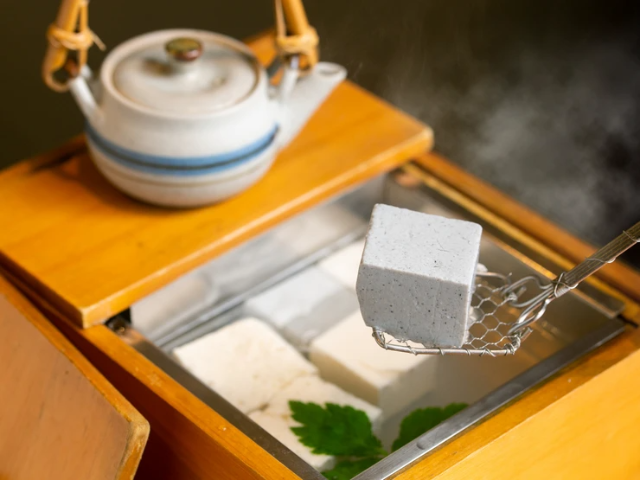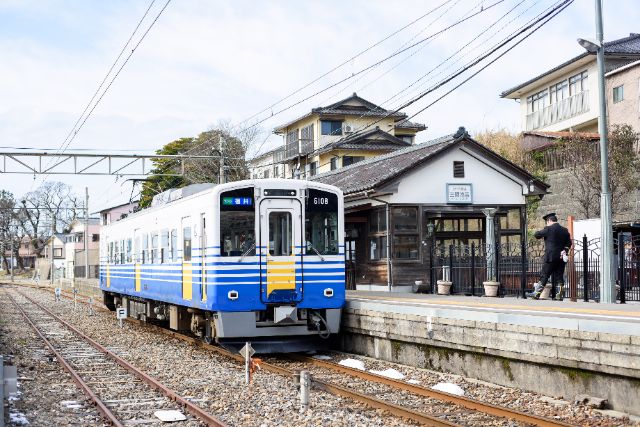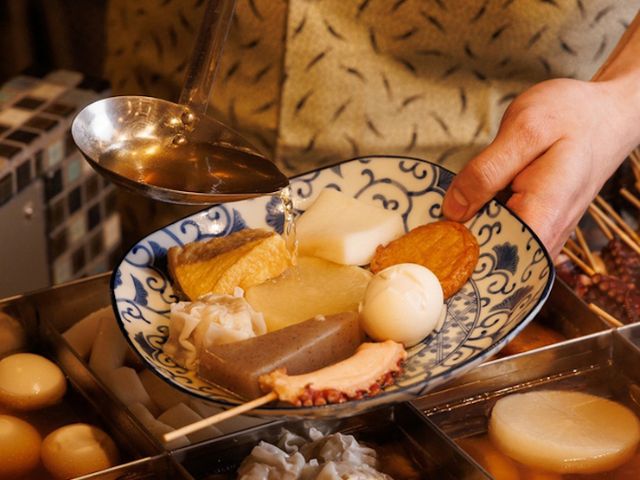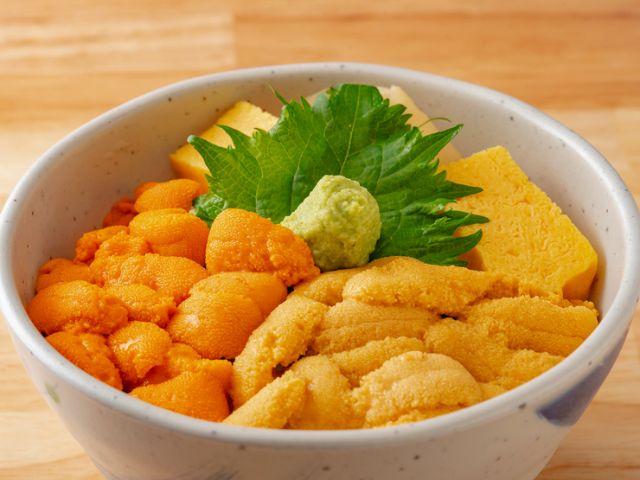Discover the Ingredients of Wellness in Fukui
Update-Date: Feb 28, 2022
Author:
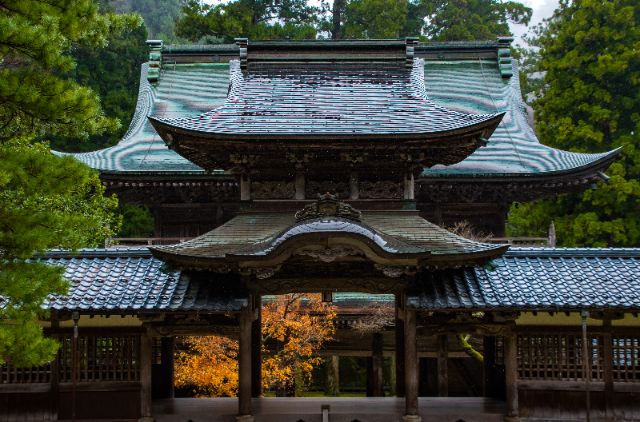
Experience True Zen in the Mountains

(Daihonzan Eiheiji Temple)
After founding a monastery at Eiheiji, Dōgen is reported to have said that it was not important that he has many disciples, and that it would be sufficient if there was even just one practitioner who could truly carry on his teachings.
Even the casual visitor, though, will find much to feel well about at Eiheiji. Following the approach alongside the tumbling waters of the Eiheiji River, walks around the beautiful outer grounds of the temple, under towering trees and beside stone walls covered in ancient moss, lead to Jakkoen, a small park of sorts, home to the graves of each former head of Eiheiji. Visitors can ring the large bell at the Shorodo (bell tower). Another Shorodo bell inside the temple precincts is rung by trainee monks to announce the day’s schedule from morning zazen to bedtime.
A walking course takes visitors around 14 of Eiheiji’s temples and structures which climb up the mountainside. Gazing up at the ceiling of the Sanshokaku reception hall to take in the 230 paintings of birds and flowers is a particularly beautiful experience. Heading up a series of staircases and deeper into the temple precincts leads to the Hatto, or “Dharma Hall,” where one might have a quiet moment to sit and contemplate the altar which features an image of Avalokitesvara Bodhisattva, the Bodhisattva of Compassion.
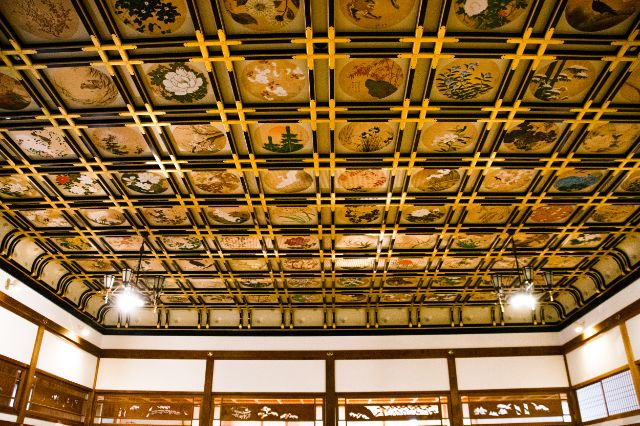
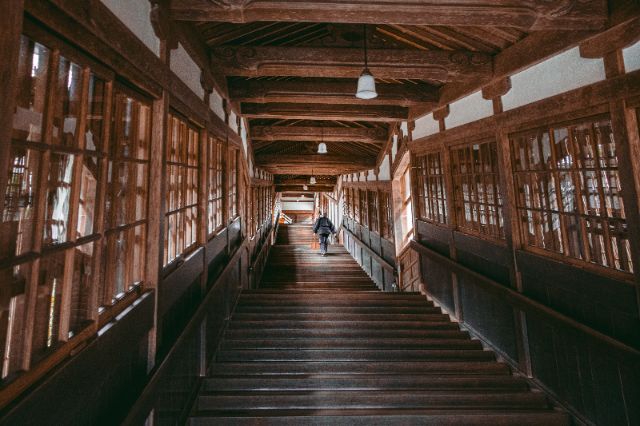
(Sanshokaku reception hall and staircase, Daihonzan Eiheiji Temple.)
As much as it leaves a lingering impression, it can be hard to put into words the Eiheiji experience, even when experienced at face value by the casual visitor. Perhaps a word or two from its founder then.
“But do not calculate with your mind and do not speak with words. Just let go and forget about both your body and mind. Throw yourself into the house of the Buddha.” (From Dogen Zenji’s Shoji - translated by Soto Zen Translation Project.)
And maybe keep quiet about the gâteau chocolat and sake you’re about to have with lunch!
Enjoy Flavors of the Satoyama
A dining experience at la clarté might make for the perfect reward, or indulgence, after the zazen experience at Eiheiji.
“Including daikon radish, soba noodles, and rice, there are various products being grown around us. The local farmers will often say, ‘Would you like to use this?’ or 'You can pick this.’” said la clarté owner and chef, Hikari Matsushita. “So, we want to try and make this a restaurant with zero food mileage.”
Chef Matsushita, who established la clarté after returning to her hometown of Takeda to raise a family, uses the fresh ingredients of the satoyama along with other fruits of Fukui’s mountains and sea. The chef’s commitment to zero food mileage, along with a reduction of food waste and plastics saw Matsushita and the la clarté team awarded a Michelin Green Star (along with a Bib Gourmand award) in May 2021.
At the time of visiting, Matsushita served a lunch course at la clarté which started with the “Mikuni amaebi bagna càuda”- the Italian “hot bath” dipping sauce serving as the perfectly creamy complement to a lineup of local favorites and flavors providing a satisfying crunch, including Kamisho satoimo taro root, koushin daikon watermelon radish, and classics such as cucumber, carrot, and paprika. Even in the foothills of the satoyama though, Matsushita can easily make good use of ingredients from the Sea of Japan, as evidenced in this dish by servings of amaebi sweet shrimp.
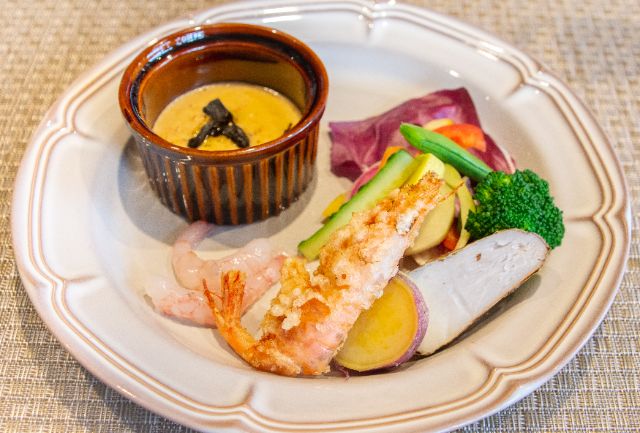
“When we started our family I felt that the children liked sausages but I didn’t really want them eating those that are sold in the stores. I thought it would be better to make my own,” she explained.
Jikasei homemade sausage, made with Fukui Arashima pork, and a nama ham salad are key elements of la clarté’s “keyaki plate.” The plate also includes an indulgent slice of quiche flavored with konka saba pickled mackerel which Matsushita likened to the local favorite heshiko - mackerel fermented in bran and brine.
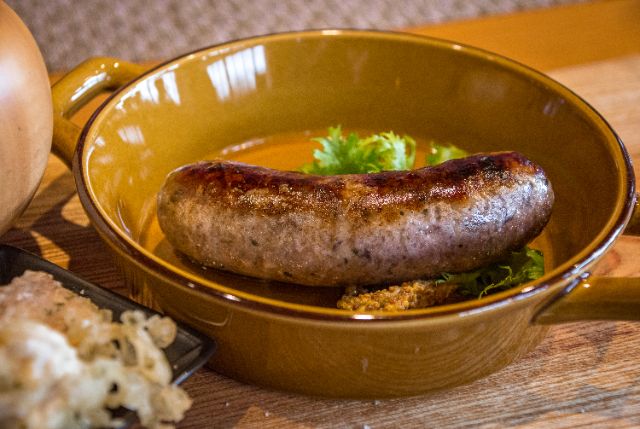
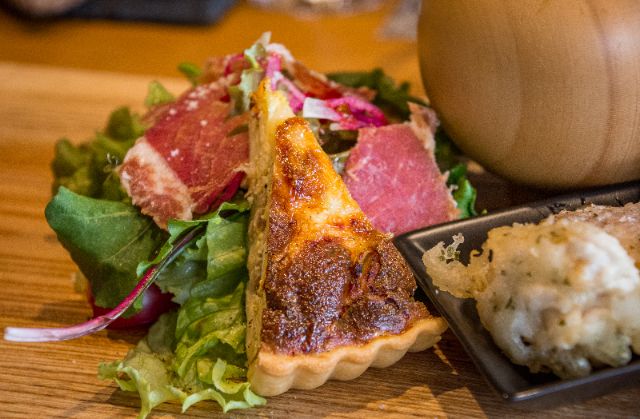
The feeling of wellness on la clarté’s menu is given a cheeky boost courtesy of a relaxed sake pairing which, at the time of visiting, saw the keyaki plate served with “sou,” a sake from Sakai-based brewers Kubota Shuzo. As a namachozo sake, sou is put through just one stage of pasteurization during the brewing process (where many types of sake are put through two), which has the effect of giving it a fresher flavor.
"It's a refreshing, light sake that I think has a similar feel to a white wine," Matsushita said.
The la clarté lunch experience is made complete with soy milk and olive oil gâteau chocolat.
Matsushita’s restaurant takes its name from the French “clarté” - clarity, light, luminosity. With its wall-to-ceiling wood-framed windows looking out to the surrounding satoyama landscape, an open kitchen counter and light emanating from the wood-fire ovens, la clarté is certainly a place of light and space worthy of its name.
What might not be immediately clear to the untrained eye though are the origins of the restaurant building, although the atmosphere of warmth and care that pervades throughout might provide a clue.
“The building was originally a pre-school but with the ongoing depopulation around here, and the number of both adults and children decreasing, the pre-school and elementary school were closed. Now children are commuting longer distances to school by bus,” Matsushita said.
Discussions between the town and local residents about how to make use of the vacant building led to Matsushita raising her hand with the proposal to turn it into a restaurant.
“The happy sound of childrens’ voices has gone but we continue our work with the hope of bringing lots of people back to the area,” she said.
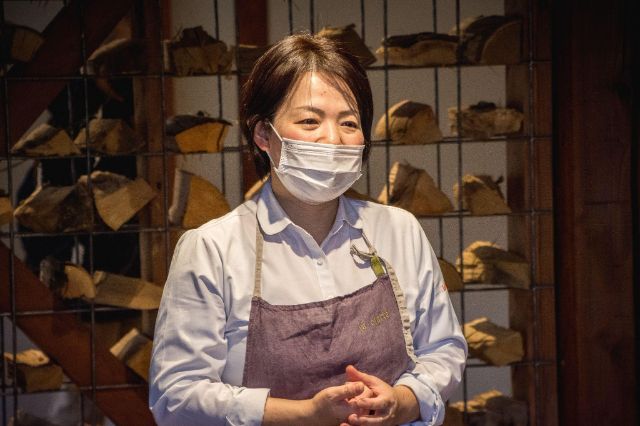
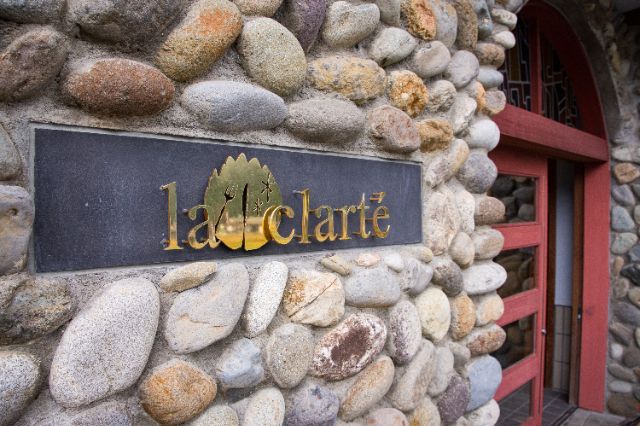
Explore Retro Townscapes and Cherished Heritage
Mikuni rode a wave of growth and prosperity into the Meiji period driven by Kitamaebune shipping routes ferrying goods between Japan’s northernmost main island of Hokkaido and Osaka in western Japan. Much of this trade has since been hauled onto trains and now lorries leaving visitors with an unhurried, easy atmosphere in which to explore the retro streetscapes and appreciate the town’s treasured past.
A stroll along Mikuniminato Kitamae-dori is a fine way to walk off lunch or build up an appetite for dinner. There’s much to explore here, from historical properties to souvenir shops and colorful eateries.
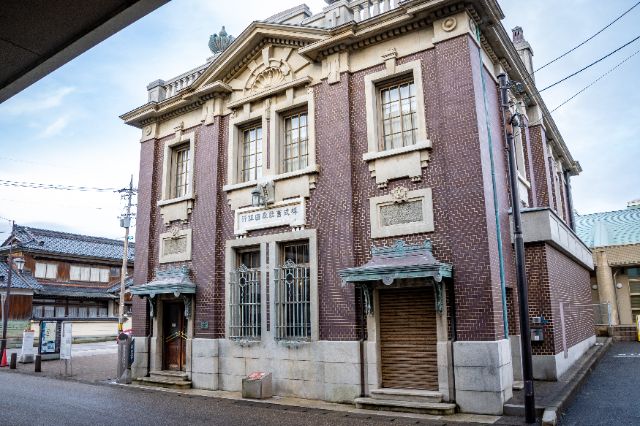
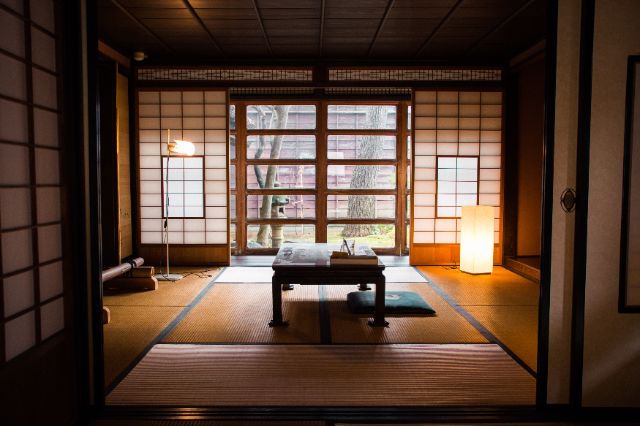
Learn from Local Artisans
Bonsai master Yoshikatsu Shimomura conducts workshops from his store and gallery space Mikunien - a beautifully renovated townhouse on Kitamae-dori, believed to date back to the late Edo period.
In 2013 Shimomura launched the brand Re:BON through which the bonsai master aims to change the perception of bonsai from being a culture and tradition that is hard to access, to one that can be enjoyed by all.
With Re:BON Shimomura uses familiar plants such as cherry trees and hydrangea to create miniature bonsai that can easily be enjoyed in the home. Pots for the bonsai come from collaborations with Fukui’s Echizen-ware ceramic artisans, among others, who create pieces that complement home interiors.
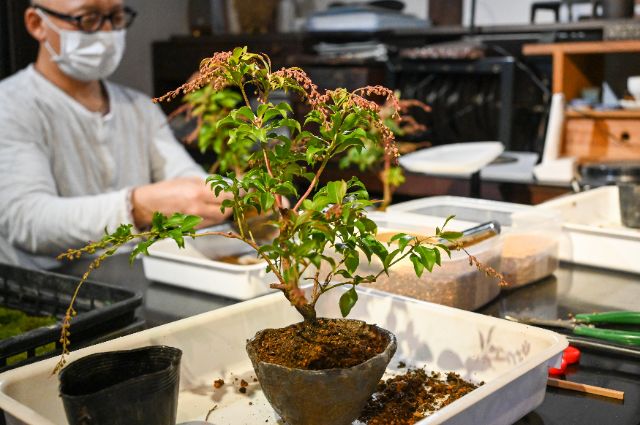
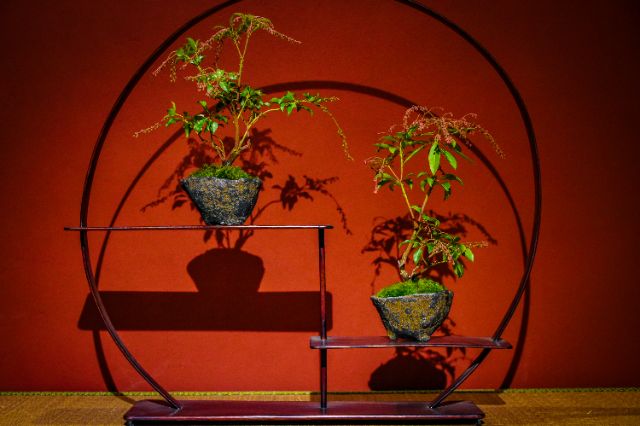
See Source-to-table in Action
November brings with it the beginning of crab season in Fukui where Japan’s celebrated Echizen-gani crabs are caught. Those crabs that are landed at Mikuni’s port are said to be among the finest and freshest in the country, in part due to the proximity of the port to the fishing grounds.

The auction bidding is fast-paced and no-nonsense. Time is of the essence when it comes to keeping things fresh. Starting with the smaller female seiko-gani crabs, bidding for each crate takes no more than 30 seconds before the action moves onto special wooden stages for the auctioning of the larger male Echizen-gani.
Market visitors can witness the auction from a special viewing room above the market floor. It’s a rare and perhaps important opportunity to gain some insight into the relationships that exist between the local people, the environment, and the traditions that help to bring our food from source to table.
Dine out on a Spectacular Sunset
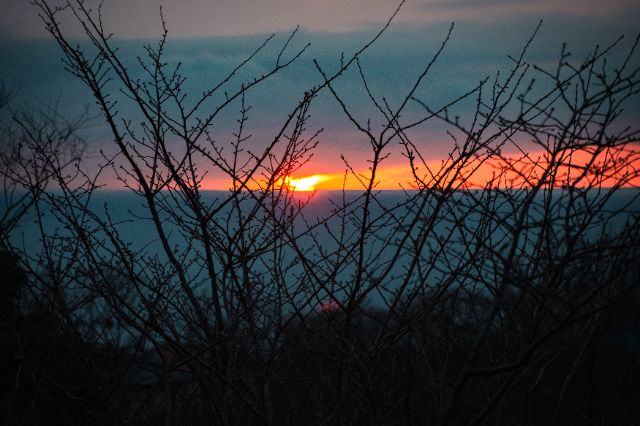
In fact, the team at Salvatore seems happy to let their food, the location, and the diners do the talking. And people do talk. Ask anyone in town where to get a decent Italian, and they’ll likely be quick to recommend Salvatore, even if they might struggle to give directions. From the restaurant itself, there’s little in the way of social media marketing or easy-to-digest conceptual soundbites. Even a menu is hard to come by.
Perhaps part of achieving a state of wellness though, is to be comfortable in relinquishing control and to take things in one's stride. Take comfort in this case - whatever’s on the menu at Salvatore, it’s likely to delight.
At the time of visiting, a two-plate dinner served at Salvatore featured a pasta main of seiko-gani crab in a rich marinara sauce sitting on a base of fettuccine pasta. According to staff, half of a single seiko crab goes into one generous serving of pasta.
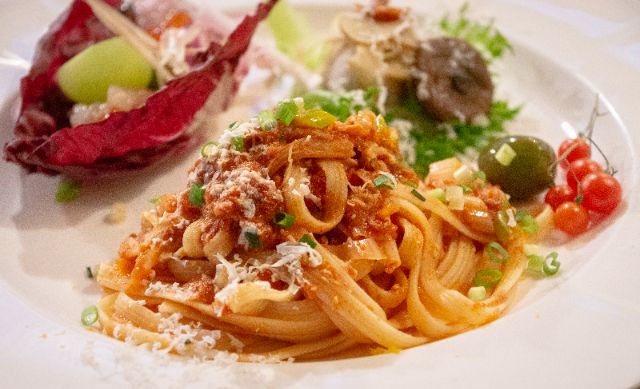
A further side included local Kamisho satoimo taro root topped with slices of gobou burdock and shiitake mushrooms marinated in garlic oil.
Dessert at Salvatore arrived in the form of a triple serving of wellness, the more indulgent kind - a striking purple sweet potato pudding flanked on one side by a dollop of classic pudding made with eggs and milk from local farm Okera Bokujo, and on the other, a tangy persimmon sauce.
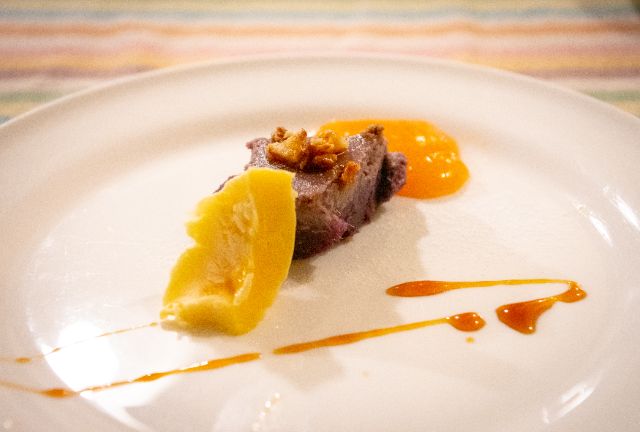
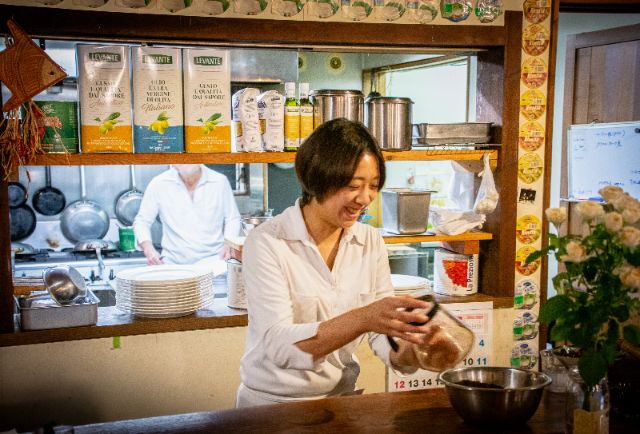
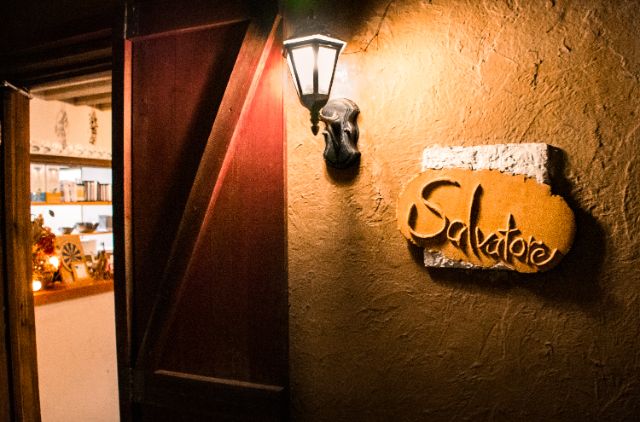
The Final Ingredient
Disclaimer: All information is accurate at time of publication.
Thank you for reading our article.
Our goal is to take your culinary journey to the next level by helping you find the best restaurant. With SAVOR JAPAN, you can search and make reservations for
the restaurants found in and around Fukui that fill your needs.
Discover more restaurants by area
Keywords
Update-Date: Feb 28, 2022
Author:
Related Articles
New Articles
Categories
Cuisine
- Bars (23)
-
Japanese Cuisine (677)
- Kaiseki (46)
- Nabe (19)
- Okonomiyaki (24)
- Shabu Shabu (37)
- Soba (18)
- Sushi (137)
- Tempura (19)
- Teppanyaki (46)
- Shojin Ryori (3)
- Tonkatsu (11)
- Kushiyaki (10)
- Yakitori (44)
- Sukiyaki (35)
- Japanese Cuisine (342)
- Oyster (2)
- Sashimi/ Seafood (20)
- Unagi (eel) (31)
- Motsu Nabe (offal hotpot) (6)
- Mizutaki (chicken hot pot) (3)
- Oden (8)
- Kaisendon (seafood bowl) (9)
- Udon (2)
- Taverns(Izakaya) Cuisine (124)
- Western Cuisine (42)
- Italian/French Cuisine (95)
- Yakiniku/Steak (225)
- Chinese Cuisine (26)
- Ramen (Noodles) Cuisine (25)
- Cafe/Sweets (60)
- Other Asian Cuisine (5)
- Global/International Cuisine (7)
- Alcohol (45)
- Other (11)
Area
- Shikoku (10)
- Kyoto and Osaka (344)
-
Tokyo (458)
- Tokyo (284)
- Ginza (43)
- Roppongi (22)
- Shibuya (26)
- Shinjuku (46)
- Asakusa (20)
- Ebisu (12)
- Tsukiji (10)
- Tokyo Landmarks (4)
- Ueno (23)
- Akihabara (9)
- Ikebukuro (12)
- Jiyugaoka, Denenchofu, Nakameguro (9)
- Shimokitazawa (4)
- Kichijoji (3)
- Tachikawa (1)
- Omotesando, Harajuku, Aoyama (18)
- Akabane (1)
- Kagurazaka (4)
- Akasaka (10)
- Odaiba (1)
- Tsukishima, Harumi, Toyosu (3)
- Near Tokyo (100)
- Okinawa and Ryukyu Islands (58)
- Hokkaido (124)
- Northern Honshu (Tohoku) (31)
- Central Honshu (Chubu) (144)
- Western Honshu (Chugoku) (32)
- Kyushu (92)
Archives
- December 2025(8)
- November 2025(4)
- October 2025(3)
- September 2025(6)
- August 2025(11)
- July 2025(19)
- June 2025(18)
- May 2025(34)
- April 2025(43)
- March 2025(30)
- February 2025(36)
- January 2025(26)
- December 2024(69)
- November 2024(31)
- October 2024(15)
- September 2024(39)
- August 2024(65)
- July 2024(31)
- June 2024(54)
- May 2024(61)
- April 2024(28)
- March 2024(31)
- February 2024(42)
- January 2024(32)
- December 2023(20)
- November 2023(5)
- October 2023(11)
- September 2023(7)
- August 2023(18)
- July 2023(8)
- June 2023(8)
- May 2023(18)
- April 2023(15)
- March 2023(1)
- January 2023(1)
- April 2022(2)
- March 2022(2)
- February 2022(1)
- January 2022(1)
- July 2021(1)
- March 2021(1)
- February 2021(1)
- December 2020(1)
- October 2020(1)
- September 2020(2)
- August 2020(10)
- July 2020(6)
- June 2020(9)
- May 2020(11)
- April 2020(8)
- March 2020(8)
- February 2020(13)
- January 2020(9)
- December 2019(24)
- November 2019(8)
- August 2019(14)
- July 2019(15)
- June 2019(18)
- May 2019(17)
- April 2019(16)
- March 2019(22)
- February 2019(22)
- January 2019(26)
- December 2018(34)
- November 2018(40)
- October 2018(32)
- September 2018(11)
- August 2018(8)
- July 2018(6)
- June 2018(9)
- May 2018(10)
- April 2018(21)
- March 2018(74)
- February 2018(39)
- January 2018(26)
- December 2017(59)
Keywords
- Omakase
- Accessible
- Affordable
- All-You-Can-Eat
- Amazing Scenery
- anime
- Art
- Autumn
- Awards
- Beer Gardens
- Breakfast
- Chef Recommendations
- Cherry Blossoms
- Chinese
- Close To Station
- Condiments
- Counter
- Coupon
- Crab
- Culture
- Dassai
- Dates
- delivery
- Early Summer
- Editor's Recommendation
- English Available
- Event
- Expo
- Fall Leaves
- Family-Friendly
- Famous Restaurant
- Famous Tourist Spot
- Fast Food
- festival
- fireworks
- Flower Farm
- Free Wi-Fi
- French
- Great Location
- Guide
- Hibachi
- hotpot
- How To
- hydrangea
- Hygiene
- Illumination
- Italian
- Izakaya
- Japanese
- Japanese alcohol
- jingisukan
- Kaiseki
- Kappo
- Kushiage
- Kushikatsu
- Kyoto
- Late-Night
- Lunch
- Manners
- matsusakagyu
- Michelin
- mizutaki
- Model Course
- monjayaki
- motsunabe
- Mt.Fuji
- Multilingual Menus
- Nabe
- Narita Airport
- New Year
- Ninja
- Noodle
- Oden
- Okonomiyaki
- omotenashi
- Onsen
- Osaka
- Osaka Station
- Photogenic Site
- pizza
- PR
- Private Room
- Ramen
- ranking
- Recipe
- Regional Cuisine
- Resort
- Rice Bowl Dish (Donburi)
- sacred places
- Sake
- Sakura
- Sashimi
- sea urchin
- Setouchi Area
- Shabu Shabu
- sightseeing
- Signature Dish
- Soba
- Solo Diners Welcomed
- Spicy Food
- Spring
- Steak
- Summer
- Sunflower
- Sushi
- takeout
- Teppanyaki
- Terrace Seating
- Tokyo
- Tokyo Experiences
- Tokyo Skytree
- Tokyo Tower
- unagi
- UNESCO
- Vegan
- Vegetarian
- Wagyu
- What Popular Gourmet Sites Recommend
- Whisky
- Wine Bar
- Winter
- Wisteria
- Workshop
- World Heritage Site
- World Writers
- Yakiniku
- Yoshoku
- Yuba
- Zen
Discover Restaurants By Area
-

Tokyo Area
Japan's largest city, Tokyo, is the center of culinary culture in Japan. Countless Tokyo restaurants serve every kind of food imaginable and the Toyosu fish market keeps restaurants stocked with the nation's finest fish.
-

Near Tokyo
Coastal areas, mountains and valleys surrounding Tokyo are bursting with tourist destinations, such as hot springs and ski slopes, where many unique foods are only available locally.
-

Kyoto and Osaka Area
The cities of Kyoto and Osaka, together with their surrounding areas, have greatly influenced Japan's culinary culture since the 7th Century. The region is renowned for its entertainment, Kobe beef, and wide-ranging traditional dishes.
-

Hokkaido Area
The island of Hokkaido is home to wide-ranging produce of the finest quality, such as rice, meat, vegetables, fish and fruit. Popular dishes from Hokkaido include robatayaki (food slowly roasted on skewers) and Sapporo miso ramen.
-

Northern Honshu (Tohoku)
The northern end of Japan's main island, Honshu, is renowned for its seasonal fruit and vegetables, nation-leading harvest of fish (especially tuna from Ohma), and delicious beef from Yonezawa, Sendai and Yamagata.
-

Central Honshu (Chubu)
Chubu is in the center of Japan's main island, Honshu, and its culinary culture reflects its position between Japan's western and eastern halves. Delicious Hida beef, world-famous Mount Fuji and many acclaimed sake breweries are in Chubu.
-

Western Honshu (Chugoku)
Chugoku, on the southwest of Japan's main island, is rich with diverse produce. Many of its products are praised as Japan's best, including Matsuba crabs from Tottori and oysters from Hiroshima. Its pears and muscats are also top grade.
-

Shikoku
The mild climate of Shikoku is ideal for growing citrus fruit such as sudachi. Shikoku is also famous for Sanuki udon noodles, huge yields of tiger prawn from Ehime Prefecture and the best torafugu (tiger globefish) in the country.
-

Kyushu
Western culture was first introduced to Japan through Kyushu, Japan's third largest island, where the influence of Portuguese and other western cuisine influenced the creation of a colorful culinary tradition.
-

Okinawa and Ryukyu Islands
Okinawa, Japan’s southernmost prefecture, is a treasure trove of distinctive dishes and drinks that have become popular throughout Japan, including Okinawa soba, unique sushi toppings and Awamori distilled liquor.
